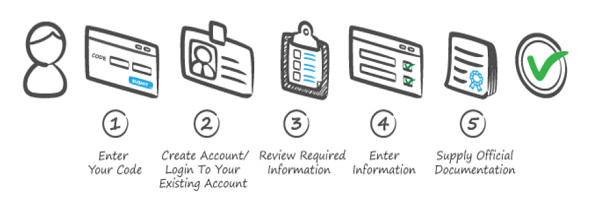Verifiable Credentials
- Authors
Verified Credentials (VCs) are digital statements made by an entity (the issuer) about a subject (the holder), which can be cryptographically verified by a third party (the verifier). They are part of a broader framework known as **Self-Sovereign Identity (SSI)**, where individuals or organizations have control over their own digital identities.
What Are Verified Credentials?
A verified credential typically includes:
- **Claims** – Assertions about a subject (e.g., "John is over 18 years old").
- **Metadata** – Information about the issuer and the credential's validity period.
- **Digital Signature** – A cryptographic proof that the credential was issued by a trusted authority.
The W3C has established an open standard for Verified Credentials to ensure interoperability across platforms and use cases.
How Verified Credentials Work
The process involves three key roles:
- Issuer: The entity that creates and signs the credential (e.g., a university, employer, or government agency).
- Holder: The subject who receives and stores the credential, typically in a secure digital wallet.
- Verifier: The party that checks the authenticity of the credential, often during a transaction or access request.
Typical Flow
- The **issuer** creates and signs a credential.
- The **holder** receives and stores it in a digital wallet (mobile app or browser-based).
- When needed, the **holder** presents the credential to a **verifier**.
- The **verifier** checks the digital signature and other metadata to confirm the credential’s legitimacy and relevance.
This model minimizes data exposure and empowers the holder with greater privacy and autonomy.
Applications of Verified Credentials
Verified credentials are increasingly used in a range of sectors to improve trust, reduce fraud, and streamline identity verification.
1. Education
- Diplomas, transcripts, and certificates can be issued as VCs by educational institutions.
- Graduates can share them with employers without relying on third-party background checks.
2. Employment
- Employers issue credentials to verify work history, certifications, or security clearances.
- Potential employers can instantly verify applicants' credentials without long delays.
3. Healthcare
- Healthcare providers issue credentials for licenses, qualifications, or COVID-19 vaccination records.
- These credentials are used for onboarding, access to restricted facilities, or international travel.
4. Government and Public Services
- Digital driver’s licenses and national IDs can be presented as VCs.
- Citizens can access government services more securely and efficiently.
5. Finance and Banking
- Know Your Customer (KYC) processes can use VCs to verify identities quickly and securely.
- Reduces onboarding time and the risk of identity theft.
6. Travel and Mobility
- Airlines and border agencies use verified credentials to streamline check-ins and border crossings.
- Digital travel credentials (DTCs) are in pilot in several countries.
7. Supply Chain and Logistics
- Suppliers and manufacturers issue and verify credentials related to compliance, certification, or origin tracking.
- Ensures transparency and trust across global supply chains.
Advantages of Verified Credentials
- Privacy-Enhancing: Only the necessary data is shared.
- Tamper-Proof: Cryptographic signatures ensure authenticity.
- Interoperable: Open standards enable use across platforms and industries.
- Portable: Individuals can carry credentials across institutions, countries, and services.
Challenges and Considerations
- Adoption requires trust frameworks and legal standards.
- User experience and wallet interoperability must be improved.
- Governance models must be clearly defined.
Conclusion
Verified Credentials offer a powerful way to represent trust and identity in the digital world. With growing support from governments, private companies, and standards bodies, they are poised to become a foundational building block for secure and user-centric digital interactions.
For more information, visit the W3C Verified Credentials Data Model specification.

